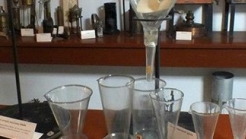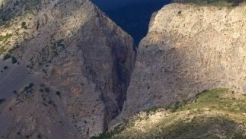

Greece
The Folkloral museum of Corinth was founded in 1976, in order to locate, maintain and exhibit folkloral material. The extended collections contain women’s and men’s outfits from many parts of Greece, as well as other handicrafts.
www.yppo.gr/1/g1540.jsp?obj_id=3269
The Folkloral museum of Corinth was founded in 1976, in order to locate, maintain and exhibit folkloral material. The extended collections contain women’s and men’s outfits from many parts of Greece, as well as other handicrafts.
The three storey building is located in a central spot of the city of Corinth, surrounded by a square, in which a bust of the founder has been erected. On the ground floor, the agricultural life og the Corinthian area is presented, through rich material showcasing tools for the basic plantations, samples of houses, houseware and other articles. In the middle floor, you can find a collection of rural furniture of the 19th century, as well as a library with books of the 17th, 18th and 19th century. These are all offerings of the family of the writer Asteris Kovvatzis.
The Museum organizes events in cooperation with Local Authorities, as well as various publications. Through these activities, the Folkloral Museum of Corinth traces back the origins from the historic past of Greece, perceptions and affirmations of the social, financial, cultural situations during the last three centuries.
The museum’s exhibits allow the public to have a critical approach to the artistic, and aesthetic pursuits and practical adaptations of the Greek person of the last two centuries.
<span style="\"font-size:" medium;\"="">


The museum Crete chemistry, is in operation since 1996 and is hosted in building the State Laboratory of Chania.

__list_246_139_c1.jpg)
The Military Museum of Rethymno is situated on the southern tip of the Municipal district of the village of Chromonastery , 11klm southeast of Rethymno and on the northern rims of mountain Vrysinas, at an altitude of 360m. From a historical viewpoint, Chromonastery is one of the most remarkable hist


Crete hosts the largest number of gorges in Greece,more than 400,with high waterfalls,rivers,Caves,Large Trees and wildlife. Because in Crete there is always something more to explore!
1039 Ε 6061 01515 00